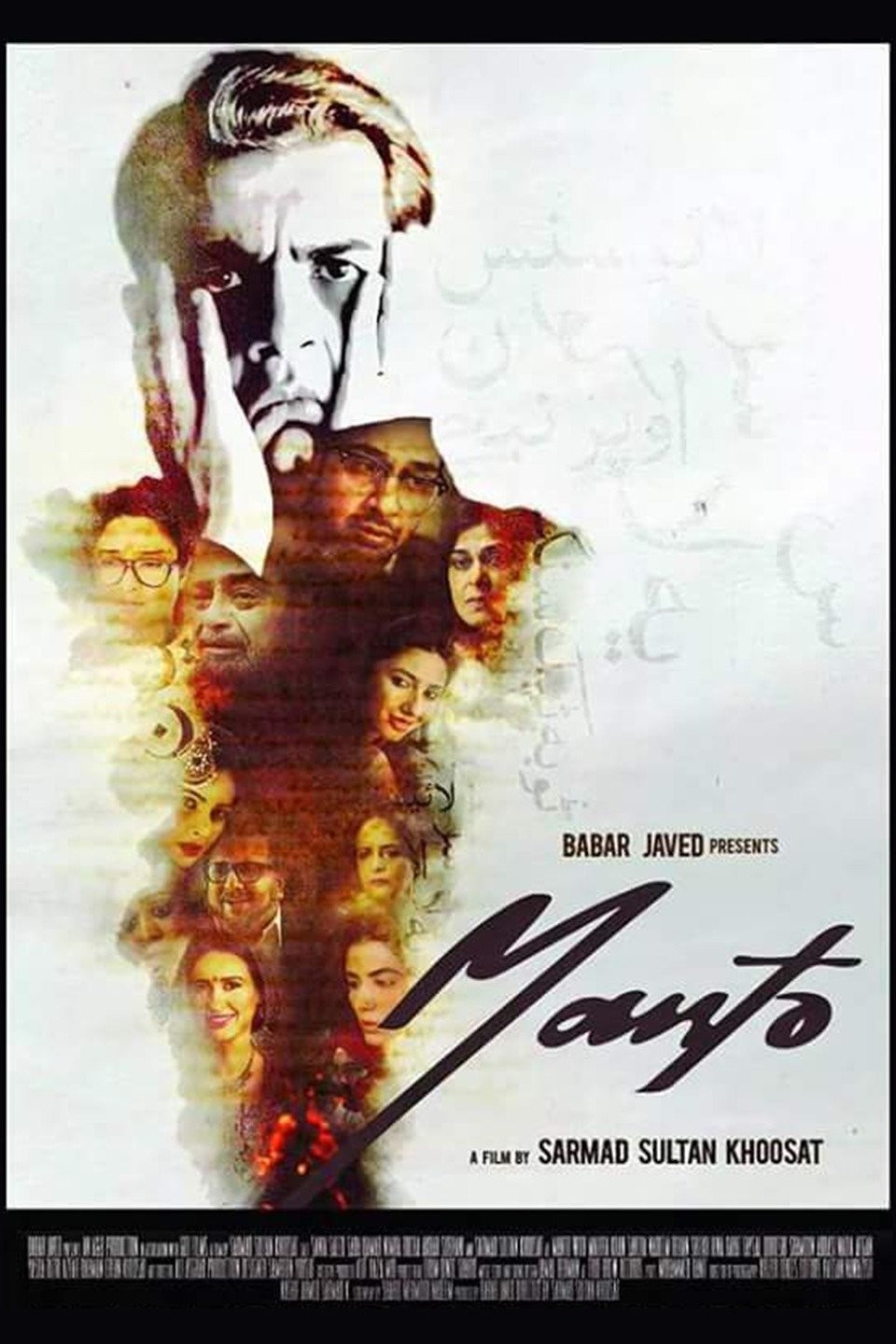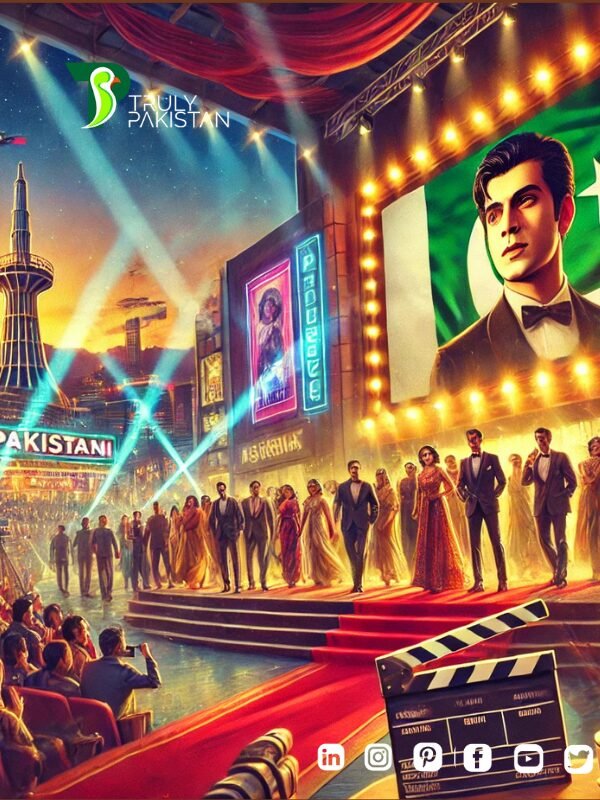Pakistani cinema has witnessed a fascinating journey, from its golden era in the 1950s and 1960s to a sharp decline in the late 1980s. Once known for producing critically acclaimed films that rivaled neighboring industries, the Pakistani film industry struggled due to political instability, censorship issues, and the dominance of foreign content. However, the industry has undergone a remarkable transformation over the past decade, marking the era of Pakistani cinema revival.
During its peak, Lollywood—the center of Pakistan’s film production—flourished with classics like Armaan (1966) and Aina (1977), which set box office records. However, as the 1990s approached, the industry faced multiple setbacks. The rise of low-budget productions, lack of government support, and an increasing preference for Bollywood and Hollywood films led to a significant decline. This period almost pushed local cinema to extinction.
The turning point came in the early 2000s when a new wave of filmmakers and producers introduced fresh narratives, improved production quality, and modern cinematic techniques. With the success of movies like Khuda Kay Liye (2007) and Bol (2011), the Pakistani cinema revival gained momentum, rekindling audience interest in local films.
The significance of the Pakistani cinema revival extends beyond entertainment. It represents a cultural resurgence, showcasing diverse Pakistani stories to the world. As the industry continues to grow, it paves the way for international collaborations, better filmmaking infrastructure, and a broader global reach. Today, the Pakistani cinema revival is shaping the future of the entertainment industry, bringing local cinema back into the limelight.
The Turning Point: How Pakistani Cinema Revival Began
The decline of Pakistani cinema in the late 1980s and 1990s left the industry struggling with poor-quality productions and dwindling audience interest. However, the Pakistani cinema revival began when filmmakers, digital advancements, and strategic policies reshaped the industry. This transformation brought a fresh wave of storytelling, modern production techniques, and a renewed sense of pride in local filmmaking.
The Impact of Digital Advancements and New Production Techniques
One of the biggest factors behind the Pakistani cinema revival was the adoption of digital technology. The shift from low-budget, outdated film equipment to high-definition cameras and advanced CGI allowed filmmakers to produce visually stunning films. Digital distribution channels, such as YouTube and Netflix, provided a platform for Pakistani films to reach wider audiences, breaking free from the limitations of traditional cinema screenings.
The rise of modern editing software, improved sound design, and international-standard cinematography made local films more competitive. Productions like Waar (2013) and Laal Kabootar (2019) demonstrated that Pakistani filmmakers could create high-quality content that resonated both locally and internationally.
The Role of Filmmakers, Actors, and Producers
A key driving force behind the Pakistani cinema revival was the emergence of visionary directors and producers who dared to challenge outdated storytelling methods. Pioneers like Shoaib Mansoor (Bol, Khuda Kay Liye) and Bilal Lashari (Waar, The Legend of Maula Jatt) set new industry standards with their powerful narratives and innovative filmmaking approaches. Their contributions significantly strengthened the foundation of the Pakistani cinema revival, proving that local films could compete with international productions.
Actors also played a crucial role in reviving the industry. Talented artists like Mahira Khan, Fawad Khan, Hamza Ali Abbasi, and Saba Qamar gained popularity beyond borders, drawing audiences back to Pakistani cinema. Their performances added depth and realism to modern films, making the Pakistani cinema revival even more impactful.
Meanwhile, producers invested in better scripts, bigger budgets, and international collaborations to elevate the industry. The focus on strong storytelling and relatable themes ensured that the Pakistani cinema revival continued to gain momentum, positioning Pakistan as a key player in global cinema.
Government Policies and International Collaborations
The Pakistani cinema revival was further supported by strategic government initiatives. The establishment of the Pakistan Film Censor Board and incentives for local filmmakers encouraged more investments in the industry. Film festivals and funding programs helped independent directors showcase their work on international platforms.
Collaborations with international studios, co-productions with Bollywood and Hollywood, and participation in global film festivals created new opportunities for Pakistani filmmakers. Movies like The Legend of Maula Jatt and Joyland (2022) gained worldwide recognition, proving that the Pakistani cinema revival was not just a local trend but a global movement.
Must-Watch Films That Define Pakistani Cinema Revival
The rebirth of Pakistani cinema has been shaped by a series of influential films that redefined storytelling, cinematography, and audience engagement. These films not only restored faith in the local film industry but also garnered international acclaim. Below are some of the most significant movies that played a vital role in this revival.
- Bol (2011) – A Powerful Social Drama
Directed by Shoaib Mansoor, Bol marked a turning point in modern Pakistani cinema by tackling deep-rooted societal issues with a gripping narrative.
- Storyline & Themes: The film follows a young woman struggling against oppressive patriarchal norms while confronting religious extremism and gender discrimination.
- Social Impact: With its hard-hitting themes and strong performances, Bol sparked important discussions about gender roles and family dynamics in Pakistan.
- Contribution to Cinema Revival: It proved that Pakistani films could offer compelling, socially relevant stories with high production value, drawing audiences back to local cinemas.


Picture Credits: https://www.imdb.com/
- Waar (2013) – The Redefining Action Thriller
Bilal Lashari’s Waar set a new benchmark for action filmmaking in Pakistan, showcasing high production quality, sharp editing, and Hollywood-style storytelling.
- Storyline & Themes: A patriotic action thriller centered around counterterrorism efforts, featuring breathtaking cinematography and a gripping plot.
- Commercial and Critical Success: Waar was one of Pakistan’s highest-grossing films at the time, proving that the local industry could produce high-budget action films on par with international standards.
- Influence on Future Productions: It encouraged more filmmakers to experiment with action films and large-scale productions, reshaping the perception of Pakistani cinema.


Picture credits: https://www.rottentomatoes.com/
- Na Maloom Afraad (2014) – A Game-Changer in Comedy
Directed by Nabeel Qureshi, Na Maloom Afraad brought fresh energy to Pakistani cinema with its dark humor and entertaining narrative.
- Storyline & Themes: A story about three struggling individuals in Karachi who devise a risky scheme to escape financial distress.
- Rise of Local Content: The film resonated with urban audiences due to its relatable themes and realistic portrayal of Karachi’s chaotic life.
- Industry Impact: Its success proved that locally relevant comedy films could thrive at the box office, paving the way for more genre diversity in Pakistani cinema.


Picture Credits: https://www.imdb.com/
- Manto (2015) – The Artistic Masterpiece
A tribute to the legendary writer Saadat Hasan Manto, this biographical drama by Sarmad Khoosat pushed the boundaries of storytelling and artistic expression in Pakistani cinema.
- Storyline & Themes: The film depicts Manto’s turbulent life, his struggles with censorship, and his battle with personal demons.
- Artistic Storytelling: The film’s non-linear narrative, experimental cinematography, and powerful dialogues made it a cinematic masterpiece.
- Redefining Modern Pakistani Cinema: It showcased the industry’s ability to produce intellectual, art-house cinema that could compete on international platforms.


Picture Credits: https://www.rottentomatoes.com/
- Ho Mann Jahaan (2016) – A Musical Journey for the Youth
Ho Mann Jahaan appealed to the younger generation with its vibrant storytelling and soul-stirring music.
- Storyline & Themes: A coming-of-age drama about three friends navigating their ambitions, relationships, and societal expectations.
- Visual Aesthetics & Soundtrack: The film’s beautiful cinematography and hit soundtrack made it a favorite among young audiences.
- Milestone for Modern Pakistani Films: Its box office success solidified the growing demand for youth-centric stories in the industry.


Picture Credits: https://www.farahdeen.com/
- Punjab Nahi Jaungi (2017) – A Romantic Drama with a Traditional Twist
This romantic blockbuster brought together mainstream entertainment with deep cultural themes, making it a massive hit.
- Storyline & Themes: A love story set against the backdrop of Punjab’s rich traditions, where modernity clashes with conservative values.
- Box Office Success: The film became one of the highest-grossing Pakistani movies, proving that well-crafted romantic dramas still had a place in the industry.
- Influence on the Film Industry: Its success encouraged more filmmakers to blend romance with culturally rich storytelling, leading to a rise in high-quality commercial films.


Picture Credits: https://www.imdb.com/
- Laal Kabootar (2019) – A Neo-Noir Crime Thriller
Laal Kabootar introduced Pakistani audiences to a unique genre—neo-noir crime thriller—offering a departure from conventional filmmaking.
- Storyline & Themes: A gripping tale of crime, revenge, and corruption set in the streets of Karachi.
- Narrative & Cinematography: The film’s fast-paced storytelling and realistic cinematography won critical acclaim.
- Expanding Genre Diversity: It proved that Pakistani cinema could explore unconventional genres beyond traditional romance and drama.


Picture Credits: https://www.imdb.com/
- The Legend of Maula Jatt (2022) – A Global Blockbuster
Bilal Lashari’s The Legend of Maula Jatt shattered all box office records, becoming Pakistan’s most successful film globally.
- Storyline & Themes: A reimagining of the classic Maula Jatt, featuring epic storytelling, high-octane action, and powerful performances.
- High Production Values: The film’s international-standard cinematography, CGI, and production design elevated Pakistani cinema to a new level.
- Global Recognition: Its international success cemented Pakistan’s ability to produce world-class films, opening doors for future collaborations with global studios.


Picture Credits: https://www.imdb.com/
The Future of Pakistani Cinema
Upcoming Films That Promise to Continue the Momentum
With a growing audience for local content, filmmakers are now exploring a variety of genres, expanding beyond traditional romance and drama. Some of the most anticipated films that are set to shape the future of Pakistani cinema revival include:
- Umro Ayyar: A New Beginning – A fantasy-adventure film inspired by folklore, promising cutting-edge visual effects and an international-scale production.
- Maula Jatt Sequel – Following the record-breaking success of The Legend of Maula Jatt, there is speculation about a sequel that could further elevate Pakistani cinema revival on a global level.
- Zindagi Tamasha (International Release) – After its controversial domestic release, this film is set to reach a broader audience, offering deep social commentary.
- Quaid-e-Azam Zindabad 2 – The anticipated sequel to the hit action film, featuring Fahad Mustafa, could set new benchmarks for the action genre in Pakistani cinema revival.
These films indicate a shift towards experimentation with diverse storytelling, proving that Pakistani cinema revival is moving beyond traditional formulas to appeal to both local and global audiences.
The Role of Streaming Platforms in the Industry’s Growth
With the rise of digital streaming platforms, Pakistani filmmakers have an opportunity to reach audiences beyond borders. Platforms like Netflix, Amazon Prime, and Pakistan’s own Tapmad and StarzPlay are offering Pakistani films and dramas to a global audience.
- Accessibility & Global Reach: Streaming services provide Pakistani films with a broader international audience, bypassing the limitations of traditional cinema screenings.
- Investment in Original Productions: As seen in India and other markets, streaming giants are now investing in regional original content. Pakistan’s growing digital consumption could attract similar investments, leading to high-budget web series and films.
- Independent Filmmakers’ Platform: Many indie filmmakers struggle with theatrical releases, but digital platforms offer a cost-effective way to showcase their work. This could lead to more experimental and bold storytelling in Pakistani cinema.
With more Pakistani films making their way onto digital platforms, the industry is becoming more adaptable to global content trends, ensuring sustained growth.
How Technology, New Talent, and International Collaborations Will Shape the Next Phase of Pakistani Cinema
The next decade of Pakistani cinema will be driven by innovation, young talent, and strategic partnerships with global industries.
1. Adoption of Advanced Technology
- With CGI-heavy films like The Legend of Maula Jatt and the upcoming Umro Ayyar, Pakistani cinema is embracing modern filmmaking techniques.
- Investment in VFX studios and post-production facilities will improve the quality of Pakistani films, allowing them to compete globally.
- AI-driven production tools and virtual reality-based storytelling could revolutionize how Pakistani films are made and experienced.
2. Emerging Talent & New Filmmakers
- A new wave of directors, such as Bilal Lashari and Nabeel Qureshi, have set high standards for filmmaking. More young directors and screenwriters are stepping up to bring fresh perspectives.
- Pakistani film schools and training programs are producing skilled professionals, ensuring a steady flow of talent into the industry.
3. International Collaborations & Film Festivals
- Co-productions with foreign studios can increase funding and improve production quality. Successful collaborations with Hollywood, Bollywood, and Middle Eastern industries could lead to crossover projects.
- Participation in prestigious film festivals such as Cannes, Berlinale, and Toronto International Film Festival (TIFF) will boost Pakistan’s global recognition.
- Movies like Joyland, which gained international acclaim, show how Pakistani cinema can break cultural barriers and appeal to a wider audience.
Also See: UNESCO Sites in Pakistan – TrulyPakistan
Pakistani cinema has undergone a remarkable transformation, rising from a period of stagnation to an era of creative and commercial success. The industry, once struggling with outdated storytelling and limited resources, has now embraced modern filmmaking techniques, diverse genres, and globally competitive production values. The Pakistani cinema revival has not only rejuvenated local storytelling but also positioned Pakistan as a rising force in the global entertainment industry.
This Pakistani cinema revival would not have been possible without visionary filmmakers, talented actors, and dedicated producers who took bold steps to bring fresh narratives to the screen. Films like Bol, Waar, Na Maloom Afraad, and The Legend of Maula Jatt have played an instrumental role in reshaping the industry, proving that Pakistani cinema revival is driven by compelling storytelling and high-quality content.
However, the sustainability of this Pakistani cinema revival depends on continued audience support. Watching and promoting local films, engaging with Pakistani content on streaming platforms, and encouraging independent filmmakers are essential steps to ensure long-term success. The industry thrives when audiences invest in it—whether by purchasing cinema tickets, streaming local content, or spreading positive word of mouth.
The journey of Pakistani cinema revival is far from over. As more young filmmakers step forward with new ideas, and as international collaborations increase, the future looks even more promising. With a commitment to quality storytelling, technological advancements, and global outreach, Pakistani cinema revival is set to reach new heights.
Pakistani cinema is no longer just reviving; it is evolving into a dynamic, world-class industry. The best is yet to come! 🎬✨


Tayyaba Qayyum says:
Truly a remarkable approach towards the idea. Thank you for the insights.